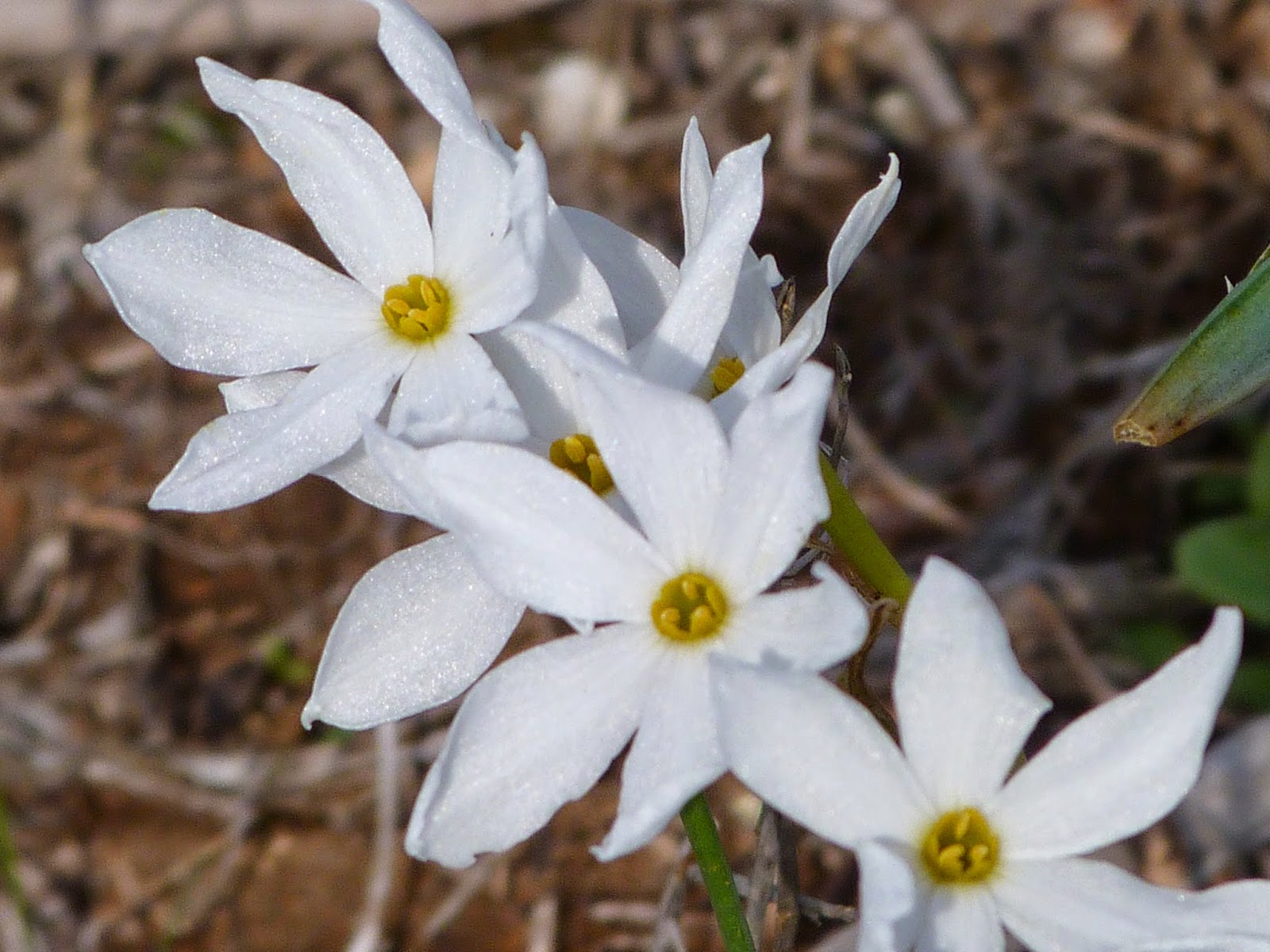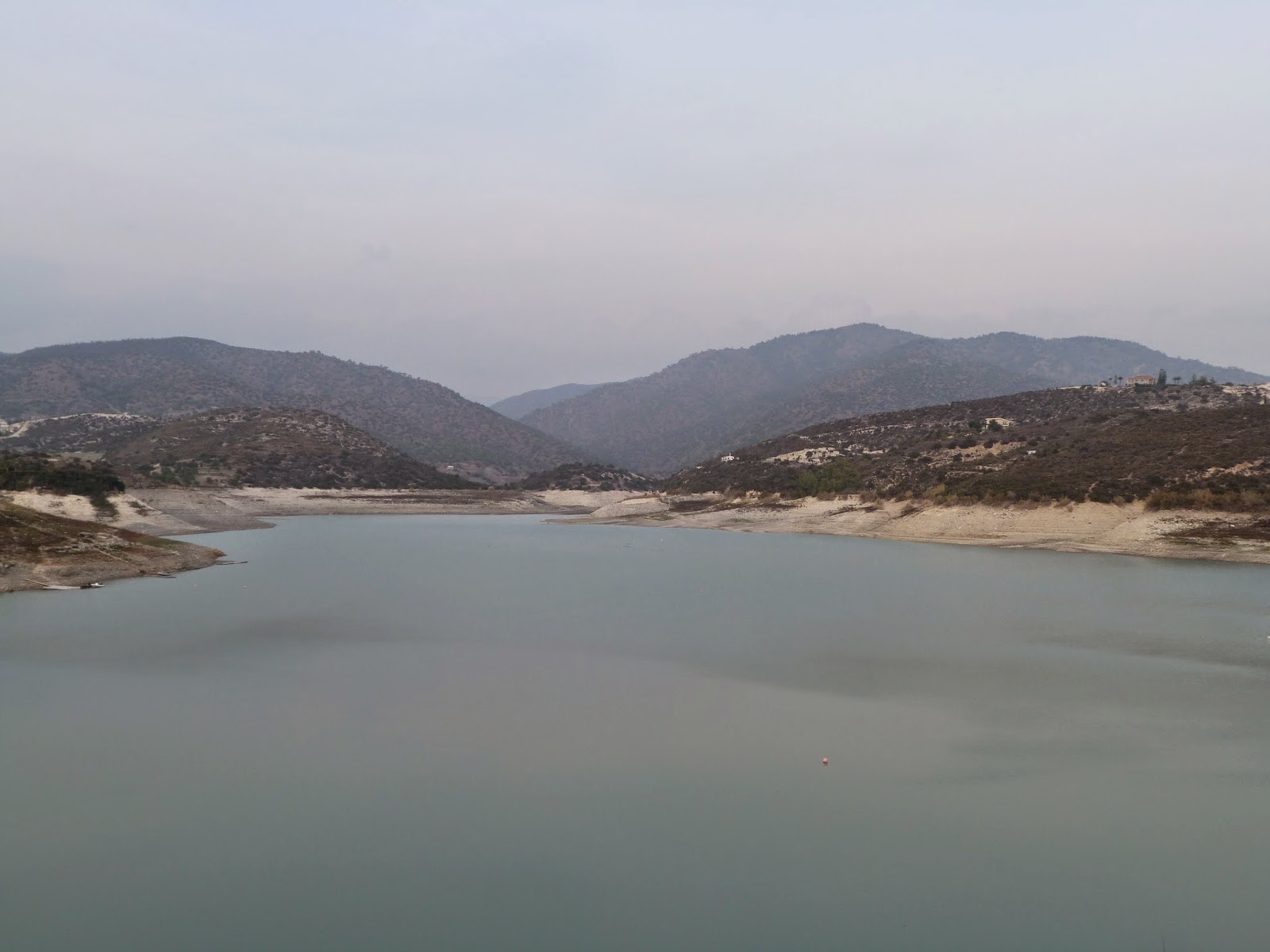5 November
We arrived on the 4th and stayed at Larnaca
overnight so we could do some birding in the area before heading over towards
Paphos. It is light just before 6am and very dark by 5.30pm, so early starts
are the order of the day. First port of call was Larnaca Salt Lake which had a small
group of Greater Flamingos present, plus a single late White Stork, a single
Willow Warbler and winter visitors in the form of Water Pipits, numerous
invisible Robins, Bluethroat, Stonechats, Moustached Warbler and Reed Bunting.
Greater Flamingoes
We then dropped into the Sewage Works lagoons which held four Black-necked
Grebes, and single Shelduck and Pochard. We headed over to Limassol next, Zakaki Marsh where we saw the main reason for
dropping by, the Green-backed (Straited) Heron, plus Spotted Crake, Water
Pipits, Blue-headed Wagtail, and a single Penduline Tit.
Then a brief visit to Phassouri Reed-bred,
which produced seven Water Pipits, and two of, Bluethroat, Moustached Warbler,
and Reed Bunting, as well as a single Lesser Whitethroat. Our final port of
call as we headed west was Kensington Cliffs where at dusk coming into roost we
saw eight Griffon Vultures, and also present were five Eleonora’s Falcon s, a
Peregrine, more invisible Robins, everywhere and a single Blue Rock Thrush.
Griffon Vultures at Kensington Cliffs
6 November
We had to head over to Polis to collect the rings and on the
way dropped into the Evretou Dam where we found, at the shallow end, a mixed
flock of Pipits consisting of Meadow, Red-throated and Water, plus a
Long-legged Buzzard, a Black-headed Wagtail, and a male Finsche's Wheatear.
Evretou Dam
After collecting the rings we went over to Paphos Headland were we saw four
Greater Sand-plovers, seven Woodlark , two Blue-headed Wagtails and two Tawny
Pipits, sixteen Black Redstarts, three
Lesser Whitethroat , and a single Whitethroat.
Greater Sandplover at Paphos Headland
7 November 2014
We headed back to Evretou Dam to give the collection of
pipits some attention and were pleasantly surprised to find that the wind was
very light indeed. Unfortunately, the soil beneath the thick carpet of green
vegetation, that attracted the pipits and wagtails, was rather difficult to work with, being sticky and
cracked into deep fissures due to heat from above while kept moist from the
stream that flowed to the dam underground. As expected, we didn’t get a lot of
birds but of the six pipits, three were Meadow and three Water Pipit. We didn’t
manage to get any of the Red-throated Pipits present. While there we had a
small group of Wood Lark pass through, two Long-legged Buzzards spiralling
above the ridge and a Bonelli’s Eagle that drew a strong reaction from the many
Jackdaws in the vicinity.
Water Pipit
Total : 8
Water Pipit - 3
Meadow Pipit - 3
Stonechat – 1
Sardinian Warbler – 1
After a midday coffee with AC, a walk up the Avakas Gorge failed to produce any
Wallcreeper, but a single Blue Rock Thrush, eleven Rock Sparrow and a solitary
Goldcrest were seen by CL who persevered to the farthest point, with again
numerous mainly invisible Robins present.
Avakas Gorge
8 November
Our second ringing visit was to the reeds at the bottom of the Xeros Potomas
river by the desalination plant. We were not anticipating a big catch, but we
only managed to equal yesterday’s 8, though we did catch one of our expected
species, a Moustached Warbler, although the Great Reed Warbler was unexpected.
Moustached Warbler
Great Reed Warbler
Sardinian Warbler female
Total : 8
Robin – 1
Moustached Warbler – 1
Great Reed Warbler - 1
Sardinian Warbler – 2
Chiff-chaff - 2
We then made a visit of one or two local sites to see what
was looking good, or not. Cyprus in early winter has a Western European feel,
with many winter visitors we expect in the UK, though the exception really is
the Wallcreeper and Finsche's Wheatear, with the odd winter vagrant from Turkey
such as Rock Sparrow, Red-fronted Serin and Rock Bunting. And, though whilst in
winter Sky Lark, Meadow Pipit, Water Pipit, Dunnock, Robin, Ring Ouzel, Mistle
Thrush, Redwing, Fieldfare, Goldcrest, Brambling, and Siskin, are present, quite a few can be
difficult to see or need a visit to the Troodos, and an available drinking
pool! During our local site visits we had around 80 Sky Lark a Mandaria, a
Wheatear at Kouklia, Asprkremnos Dam apart from a very low water level and few
birds, did have a single Great Crested Grebe, and our final visit to Anarita
Park enticed us to put up the nets again. We managed nine birds this time,
though the session did produce Denise’s first Serin and Corn Bunting! Also a
Quail flew in and landed 5 feet from the net and immediately disappear into a
bramble clump, and it was not even a shooting day!

Corn Bunting
Total : 9
Robin – 2
Common Stonechat – 1
Sardinian Warbler – 2
Chiff-chaff – 2
Serin – 1
Corn Bunting – 1
9 November
Today was a run up to Troodos to look for some of those less
than easy to see winter visitors, unfortunately being a Sunday it was also a
hunting day (the other being a Wednesday). Around Troodos village we found a
single Mistle Thrush, plus Short-toed Treecreeper and the endemic species of
Jay and Coal Tit. We then paid a visit to the Troodos Botanical Gardens which
is located at the site of an old Asbestos mine, we had a Water Pipit, which was
slightly odd considering the location, more a summer location than winter, and
four Hawfinch coming into drink at the pools by the small lake. On the way back
we visited a couple of the picnic sites, and one, Livadi tou Pashia had a
medium size wet area at the start of the entrance track that was bring birds
down to drink and after a while sat there we saw fourteen Blackbirds, a single
Ring Ouzel, six Song Thrush, three Mistle Thrush, three Fieldfare, a single
Redwing, five Hawfinch and four endemic race Common Crossbills. At the Kampos
tou Livadiou Picnic site we had a flock of around 60 Fieldfare.

Asbestos quarry disused buildings
Fieldfare
10 November
We returned to Anarita Park and did an am session, that also
turned into a return pm as we found a small area of water in the old quarry.
Sixteen birds were processed in the morning and a further six in the late
afternoon. In addition to the birds
processed we also saw four Wood Lark, two male Fincsches Wheatears and a male
Blue Rock Thrush.
Black Redstart juvenile male
Serin male
Total : 20 (2)
Robin - 2
Black Redstart – 1
Common Stonechat – 4 (1)
Sardinian Warbler – 3 (1)
Great Tit – 1
Serin - 1
Goldfinch – 7
Greenfinch – 1
11 November
We were going to ring at the Achelia reeds by the sea, but when we got there it
was not really suitable and stopping at the nearby soakways the area seemed
about the best we had found so far, so we set up, slightly later than wished
for, but we processed 39 birds, making it worthwhile and an area to visit again
for sure. In addition to the processed birds we also saw a couple of
Bluethroats, Great Reed Warbler, Penduline Tit, Red-backed Shrike (which seemed
to have a deformed bill, not hooked and looked slightly elongated) and Reed
Bunting.
Willow Warbler
Bluethroat
Total: 39
Robin - 2
Dunnock -1
Bluethroat - 1
Cetti’s Warbler – 5
Moustached Warbler – 2
Blackcap - 7
Chiff-chaff – 17
Willow Warbler - 1
Goldfinch – 3
Before going back late pm to Anarita Park to give the quarry
pools another try, with a different set up, we dropped by Mandria, which was
quiet with around 120 Sky Lark and a single Wheatear, though two juvenile
Bonelli’s Eagles on the outskirts of the village was good.
Anarita Park quarry puddles proved to be another non-event, and
on that basis we will leave them to the birds, slightly topped up from our two
visits. One of the male Finsche’s Wheatears was feeding within the quarry
whilst we sat there for a couple of hours.
Finsche's Wheatear
Total: 2
Goldfinch -2
12 November
We decided to make a return visit to the puddle at Livadi tou Pashia picnic
site in the Troodos as the day after our last visit, as well as a few
Yellowhammers, it also had a Pine Bunting coming down to drink or bathe. When
we arrived three local photographers were there, with the front nearside wheel
of their 4x4 almost in the puddle. I commented they will not get anything
coming down if they are that close, so they moved back by about 2 metres, and
partly blocked our view of the puddle area near the juniper which was the
birds’ main route down to the pool. So we had to drive through and park up on
the other side, further away than the photographers, but still closer than we
would have been. For some reason two of the photographers spent some time
walking around, and get in and out of the vehicle, and even when in the vehicle
were not overly quite, so though a few birds came down, very few did and aby
late morning we had a period of over an hour and a half with nothing coming
down at all. At 1pm they gave up and left and we moved back further up the
track, and it was not long before the number of birds coming to the puddle
resumed and though it never got as busy as Sunday , the number of birds
visiting did improve, with in the end one Water Pipit, Song and Mistle Thrush, two
Blackbirds, Crossbill, and a male Siskin and up to nine Hawfinch, plus the
local Coal Tits and Chaffinches. In a way a bit of a disappointing day through
the lack of birds using the pool and so much time spent sat in the car, and a
missed chance to at least have potentially have got to see Yellowhammer in Cyprus,
although the Pine Bunting was really too much to expect to have seen.

Still too close, even after moving back at our request.
The view from our vehicle after they left, and we re-positioneed to a
position further back and the birds started to return back to the pool
Hawfinch
Cypriots go in for picnicking in a BIG way.
Some sites accommodate 1600+ people!



































































